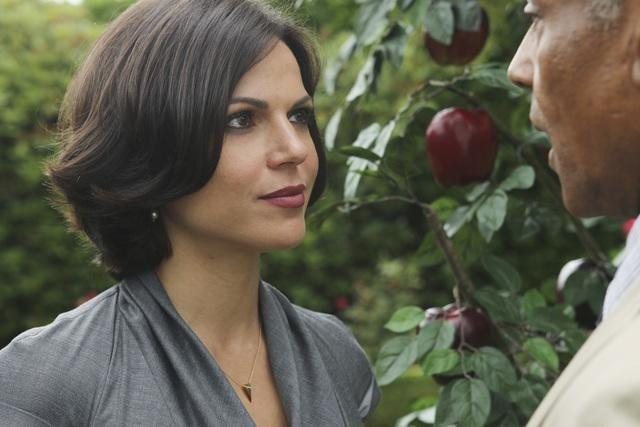Once Upon a Time, ABC’s new drama, is set in the fictional Storybrooke, Maine, a town populated by fairy-tale characters cursed to forget their pasts. Snow White is Miss Blanchard (Ginnifer Goodwin), a school teacher; the Evil Queen is Regina (Lana Parilla), the town mayor. They’ve been frozen in time until Emma Swan (Jennifer Morrison) arrives in town: She’s the daughter of Snow White and Prince Charming, but doesn’t believe it. “Just because you believe something doesn’t make it true,” she complains.
She’s right. So when the mayor/Evil Queen hands Miss Swan a Red Delicious apple with a menacing smile and calls it a Honeycrisp, all the while yakking about cultivating the tree since she was “a girl,” I scrunched my face and thought, “fairy tale!” Honeycrisps have only been around since 1991, because, like Golden Comet chickens, they’re a modern hybrid. This would make the toothsome Regina 20 years old, assuming she started caring for the tree as an infant.
Of course, I’m nitpicking—but with a purpose. The apple-breed mix-up is a handy symbol for a larger pattern: Food has always played a surprisingly important role in the Snow White tale, but the significance of that food has been erased over time—and, with it, much of what this seemingly familiar story once meant. Once upon a time, this tale was, in part, about the restoration of rightful royal authority. And you can see that more clearly if you know something about what people used to eat.
Snow White’s metamorphosis begins with the Brothers Grimm. They replaced manly miners with seven eunuch dwarves—dwarves who asked Snow White to be their cleaning lady, rather than leaving her to even more old-fashioned options of earning her keep. But it was Walt Disney who, in his beloved 1937 film, transformed Snow White from a wayward pariah into a princess for the people.
Disney omitted the most offensive part of the story: the Queen’s plan to have Snow White murdered so she could eat her for dinner. “Kill her,” she orders the huntsman, “and as proof that she is dead, bring her lungs and her liver back to me.” In some versions of the story, the Queen asks for the heart instead. Freudians such as Bruno Bettelheim have interpreted this as a sign of maternal perversion, the breaking of an ultimate taboo: cannibalism. But it is also something else, which has to do with the animal that was killed and served instead.
The Evil Queen reveals herself as a social climber by asking for the variety meats. While hunting was a noble pastime—Elizabeth I regularly shot deer with bow and arrow; in France, the King and Queen participated in the ceremonial hunt as well as presiding over it—the meat obtained from the kill was chiefly consumed by the servants (after the dogs were served). And the most prized bits were “the muzzle, tongue, ears, testicles, franc-boyau, heart artery, and the little strings attached to the kidneys.”* These parts were bundled together, hung from a hook, and taken away to be presented in a dish presented to the royals.
The choicest bits destined for “the mouths of the king and queen” are not eaten today. “Franc-boyau” cannot be translated, because nobody is quite sure what it is. These bits may or may not be tasty, but the main thing is that they’re impossible to fake: Pig’s ears look like pig’s ears, and testicles look like testicles. (By contrast, it’s hard to pick out a pig’s lungs from a lineup unless you’ve spent a lot of time with them.) The harvesting of distinctive bits, such as muzzles, helped ensure that there was no fraud in either the front or the back ends, thus proving that royal authority was rightfully asserted over the land and its people.
The Evil Queen didn’t know this. And by demanding the “wrong” organs, she reveals that she isn’t noble. The Brothers Grimm didn’t know this, because they were bourgeois, and Walt Disney didn’t care, because he was American.
* See the entry for “La Chasse” in Diderot and D’Alembert’s Enyclopédie, 1765.
